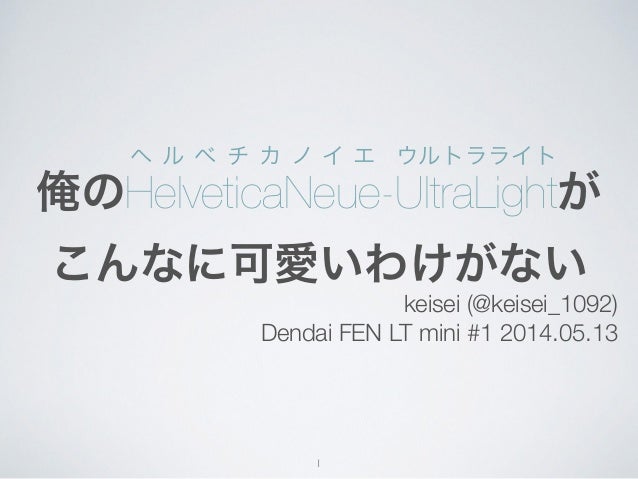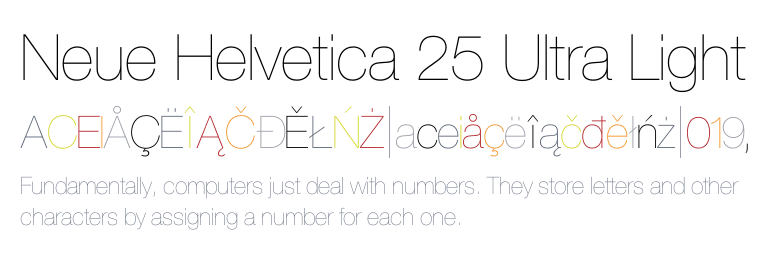

Unobtrusive and elegant in appearance with legibility and distinctiveness in mind. Caution though: Nerd alert!The neue OS Icons was designed in a similar fashion as neue UXUI Icons. And if you want to crank up to eleven superimpose a grid onto each icon. The family of six weights enables you to style your iPhone screen in multiple ways: as a collection of stylised icons in outlined and filled variants or as a purely typographic setting with one or two letter icons. Neue OS Icons is a font to personalise app icons on your iPhone.

Please say Looking forward hearing from you!
#Helvetica neue ultralight trial#
That simple.We’re happy to provide you with trial fonts and a variable version of the neue UXUI Icons family on request.

Regardless whether you’re using any Adobe product, Figma or Sketch simply copy/paste any shape from one environment into another. We made sure that the family works both in traditional and modern design and prototyping environments. This modesty in expression gives room for a seamless blend between type and icon. Furthermore the gradation of stroke thicknesses is a way to put differently sized icons into visual equilibrium.The design of neue UXUI Icons is purposefully simple and unpretentious in appearance. The individual styles are designed and nuanced in such a manner that allows for a harmonious co-existence between typefaces and icons. Noteworthy are also the almost 200 arrows in any shape or form.neue UXUI Icons comes in seven weights ranging from Thin to Black. Complementary to the elegantly outlined design neue UXUI Icons includes filled and crossed-out variants. Neue UXUI Icons is an unmatched iconographic system - with over 1100 carefully designed icons in multiple variants and stroke thicknesses it is the go-to toolkit for ambitious user experience/user interface designers and developers.Each member of the system comes with no less than 1155 icons covering areas such as office equipment, social media, controls, layout, music, navigation, weather, and more. The font contains additionally the origin letterforms from the regular Neue Frutiger font which can be accessed through an Opentype feature." The lowercase l" is curved at the baseline to better differentiate between the cap "I", additionally the number "0" has a dot inside to better differentiate between the cap "O", and the number "1" is now a serifed 1. Especially for the requirements of the newly released German DIN 1450 norm we have built together with Adrian Frutiger specific weights of the Neue Frutiger. Likewise, Neue Frutiger is perfect for use alongside Frutiger Serif.Newly added are the "Neue Frutiger 1450" weights.

As a result of this, already existing Frutiger styles can be mixed with Neue Frutiger where necessary. The perfect mix, guaranteed Neue Frutiger has the same character height as Frutiger. Despite the various changes, this "New Frutiger" still fits perfectly with the original Frutiger family, and serves to harmoniously enhance the weights and styles already in existence. Frutiger Next meets the demand for a space-saving, modern humanist sans.2009's Neue Frutiger is a rethink of the 1977 Frutiger family, now revised and improved by Akira Kobayashi in close collaboration with Adrian Frutiger. This new design created a balanced image and included considerably narrower letterspacing. It was based on a new concept, the most obvious visual characteristics of which is the larger x-height, as well as a more pronounced ascender height and descender depth for lower case letters in relation to capitals. The typeface family that which emerged as a result of this demand was added into the Linotype library as "Frutiger" in 1977.Frutiger Next, created in 1999, is a further development of Frutiger, not necessarily a rethinking of the design itself. The Frutiger® typeface not only established new standards for signage, but also for a range of other areas in which a clear and legible design would be required, especially for small point sizes and bread-and-butter type. The team carried out their task so effectively that a huge demand for their typeface soon arose from customers who wanted to employ it in other signage systems, and in printed materials as well. The development of all signage was put into the hands of Adrian Frutiger and his studio. During planning for the new Roissy Charles de Gaulle airport in Paris at the beginning of the 1970s, it was determined that the airport's signage system had to include the clearest and most legible lettering possible.


 0 kommentar(er)
0 kommentar(er)
